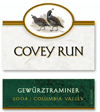 |
|
Wine Details
Price:
Description:
Made in a slightly sweet style, with a small percentage of Muscat Canelli blended in to enhance its natural fruitiness, this fragrant wine offers floral, lemon and lychee fruit aromas, with a fresh, clean palate that makes it delightful to quaff chilled on the patio on a sunny summer afternoon.
|
|
|